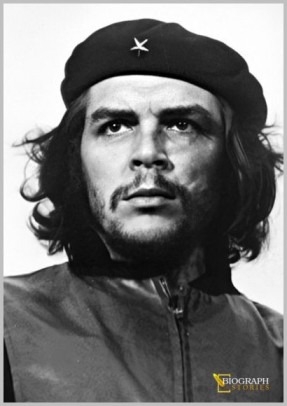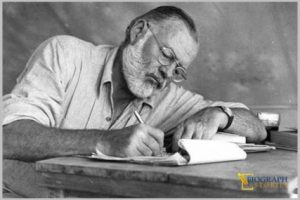
Che Guevara Quick Fact:
Born: 14 June 1928, Rosario, Santa Fe Province, Argentina
Died: 9 October 1967 (aged 39), La Higuera, Vallegrande, Bolivia
Cause of death: Execution by shooting
Resting place: Che Guevara Mausoleum, Santa Clara, Cuba
Alma mater: University of Buenos Aires
Occupation: Physician, author, guerrilla, government official
Organization: 26th of July Movement, United Party of the Cuban Socialist Revolution, National Liberation Army (Bolivia)
Known for: Guevarism
Spouse(s): Hilda Gadea (m. 1955; div. 1959), Aleida March (m. 1959)
Children: Hilda (1956–1995), Aleida (born 1960), Camilo (born 1962), Celia (born 1963), Ernesto (born 1965)
Parent(s): Ernesto Guevara Lynch, Celia de la Serna y Llosa
Biography of Che Guevara:
An Argentine Marxist revolutionary Che Guevara who was a prominent figure during the Cuban Revolution. He dedicated his life to bring about the downfall of imperialism and the establishment of socialism. He became the countercultural symbol of rebellion and revolution through his relentless work. Guevara held numerous profiles throughout his life that of a doctor, author, guerrilla leader, diplomat, and military theorist. Guevara was disturbed from an early age by the disdainful living conditions of the poor, and the hardships they faced. It was his early expeditions that left a deep impact on him and propelled the emotions of anger and resentment, making him a rebel. Along with Fidel Castro, he have played a significant role in the ‘Cuban Revolution’ and won against the Batista regime. He came up with progressive plans and shaped the economy of Cuba after ‘Cuban Revolution’. He also helped to literacy rate of Cuba from 60% to 96%. It was his confidence of creating the consciousness of ‘new man,’ driven by morals rather than material incentives that made him a revered figure in history. The ‘TIME’ magazine’ listed him as ‘100 most influential people of the 20th century’ for the same.
Childhood & Early Life of Che Guevara:
On June 14, 1928, Che was born Ernesto Guevara in Rosario, Santa Fe province, Argentina. He was born to Celia de la Serna y Llosa and Ernesto Guevara Lynch. He was the eldest of five children of this couple. He was introduced to many political perspectives at a young age, primarily that of the leftists. He developed an affinity for reading, and was known to be a voracious reader. He read the works of various revolutionaries and political leaders of the world during his early days, including Karl Marx, William Faulkner, Andre Gide, Emilio Salgari, Jawaharlal Nehru, and Albert Camus among others. He excelled in athletics and various sport activities as a youngster. To study medicine he enrolled at the ‘University of Buenos Aires’ after receiving his preliminary education. While attending college he embarked on two long journeys; in 1950 a 4500km solo bicycle journey through the rural provinces of Northern Argentina, and in 1951 with his friend Alberto Granado, a nine-month, 8000-kilometer continental motorcycle trek through most of South America. The poor living conditions he witnessed on their nine-month journey had a profound effect on Guevara. The ruthless exploitation of the poor baffled him and the friendliness prevailing amongst desperate people amazed him. The notes taken during the two trips evolved to form a book titled ‘The Motorcycle Diaries.’ The book became a ‘New York Times’ bestseller. He received his degree in 1953.
Later Life of Che Guevara:
He embarked on another journey after receiving his degree in medicine that further strengthened his views against capitalism and the need to save the world from it. He became politically active, first in Argentina and later in Bolivia and Guatemala. In 1954, he started working in the ‘General Hospital’ in Mexico City to earn his living. In addition, at the ‘National Autonomous University of Mexico’ he gave lectures on medicine. Also in a news agency, he worked as a news photographer. He was introduced to Cuban revolutionary leader, Fidel Castro in 1955. The two joined hands to work against imperialism. To overthrow the Batista government in Cuba he helped Castro. For this, he attained military training and learned the hit and run tactics of guerrilla warfare. The troops loyal to Castro, initiated the ‘26th of July Movement’ in 1956, during which in the Sierra Maestra mountains they aimed at setting up a base. However, only 22 of the 82 members reached to the top because the government troop attacked them. They raided army camps, building up their stock of weapons in the next couple of months and ultimately gaining victory over the territory. They redistributed land equally among all peasants upon gaining control over the region. The peasants against the Batista forces helped them in return. Castro’s growing popularity increase the strength of his army. Peasants, students, and Catholic priests started joining the army. The Batista government became furious at the growing popularity of the Castro army and executed people publically that raised a fuss amongst the people against the government. Castro’s army mainly comprised of the poor and the deprived but by 1958, they gained the backing of the influential middle-class, and lawyers, doctors, accountants, and social workers supported them. Castro’s troop fought bravely against the government forces, inflicting the latter with one defeat after another. Leading to the failure of the plan of the Batista government, which aimed at destructing the Castro forces, Guevara played a critical role in the ‘Battle of Las Mercedes’ in 1958. Then, for the final push, he led fighters towards Havana. Santa Clara, which became the final decisive military victory of the revolution, Guevara played a crucial role in taking over it. Fidel Castro took control of Havana on January 8, 1959. At the ‘La Cabaña Fortress’ prison, Guevara took up the position of a commander. In addition, he was in charge of instituting revolutionary justice against those considered traitors, informants, and war criminals. To cover the ‘Bandung Pact’ countries and cities of Singapore and Hong Kong he went on a three-month tour in June 1959. He was made the minister of industries after returning from the tour. He confiscated land owned by US corporations and re-distributed the same during his tenure as the minister. He also made higher education accessible to all. The literacy rate rose from 60% to 96% during his rule. He was also made finance minister and president of ‘National Bank’. He worked towards eliminating social inequalities by nationalizing factories, banks, and businesses in his new profile. He visited China and Soviet Union in 1961 and was mainly responsible for the Soviet-Cuban relationship. He resigned from his governmental duties after some time and resume his work as a revolutionary abroad. He left Cuba to set up guerrilla troops in 1965. First in Congo and later in Bolivia. He tried to convince the people of Bolivia to rebel against the government but unfortunately met with little success.
Personal Life & Legacy of Che Guevara:
In 1955, Che Guevara married to Hilda Gadea. The couple was blessed with a child. However, the relationship did not last long because of his relationship with Aleida March and in 1959, the two was separated. Then, on June 2, 1959, he married Aleida March. The couple was blessed with four children. Unfortunately, his efforts to bring about an uprising in Bolivia not just failed, but cost him his life. The government forces captured him and on October 8, 1967, he was taken to La Higuera. Bolivian President Rene Barrientos ordered him to be killed. Mario Teran, a sergeant in the Bolivian army, carried out the execution. Guevara’s body was found near a Vallegrande airstrip in 1997. His mortal remains were laid to rest, in a specially built mausoleum in the Cuban city of Santa Clara with military honors.








